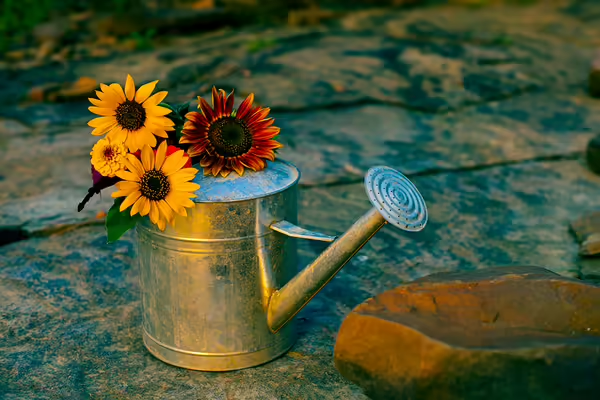
URBANA, Ill. — This summer has brought drought to many parts of Illinois. Most gardeners are aware that plants need water to thrive, but it can be helpful to review the ins and outs of garden hydration to ensure the best results.
“Many environmental conditions factor into plant survival,” says Andrew Holsinger, University of Illinois Extension horticulture educator. “Hydration is one of the most important of those factors.”
Plants vary in their moisture requirements, but as a general rule, vegetable crops require at least 1 inch of water per week. Excessively hot or windy days lead to a need for more frequent irrigation because more water is lost from the plant. Too little water can cause not only drought stress but also increased disease or insect susceptibility.
Holsinger says the most straightforward way to identify drought is to look for the impacts such as on plants. Sometimes these impacts may go unnoticed, especially with trees and shrubs. Water is especially important in the fall for evergreen trees and shrubs as these plants still lose water even during the winter.
Mulch can help conserve moisture and reduce the plant’s demand for more water. For plastic mulches, the plants will need to be irrigated regardless of rainfall events. Water does not readily penetrate beneath the plastic, so it is often necessary to add drip irrigation under the plastic.
“Putting moisture in the right place, where the plant is located, is also a way to reduce weeds because you’re not providing water where it isn’t necessary,” Holsinger says.
It’s not advised to water mid-day during hot periods as more water is lost to evaporation. Morning is usually the best time to water as it allows for the foliage to dry preventing fungal diseases caused by leaves that have remained wet for too long.
Drip irrigation delivers water to the base of the plant instead of on its foliage. Gardeners should avoid excessive water application on leaves to avoid fungal pathogens and diseases, some of which can cause wilting. Surprisingly, overwatering can also cause wilting, so be sure to check the soil before watering.
“For most plants in the garden or landscape, a well-drained soil is required. However, in some spaces where drainage may be an issue, a raised bed can help increase drainage,” Holsinger says. “Raised beds can be used for both ornamental and edible crop plantings.”
Containers can be great for growing, but they need adequate drainage holes. A more frequent watering schedule is required for containers, as they dry out more quickly than garden beds.
“It’s rare in Illinois to see consistent precipitation throughout the season, and an attentive gardener is aware of it,” he says. “Your watering schedule will have to be adjusted over the season.”
As plants mature, they require more water. Therefore, if you have a limited amount of water available to dedicate to your garden, you may want to plan ahead. Setting up zones based on water use can help to distribute water at appropriate levels to plants based on their cultural requirements.
For more information on plant care, connect with your local Illinois Extension county office at go.illinois.edu/ExtensionOffice.
WRITER: Andrew Holsinger, Horticulture Educator, University of Illinois Extension
Illinois Extension leads public outreach for University of Illinois by translating research into action plans that allow Illinois families, businesses, and community leaders to solve problems, make informed decisions, and adapt to changes and opportunities.